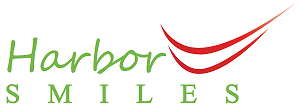
The nature center, named for former Huntington Beach Mayor Donald D. Shipley, opened in 1974. Dr. Shipley’s ambition was to create a setting that resembled California in the early twentieth century. The Center, located in the Huntington Beach, CA area, now features 4,000 feet of well-maintained paths that wind through a variety of ecosystems, including oak woodlands, Torrey pine forests, meadows, and Blackbird Pond, a natural freshwater wetland with mature willows and sycamores. A 1,500-square-foot Interpretive Building houses displays on local wildlife and ecology.
Self-Guided Trails
Take a self-guided tour of Shipley’s 18 acres of restored California native habitat and take in the sights, smells, and sounds. Feel free to explore and meander around our 4,000-foot-long network of well-maintained walking pathways that wind through a variety of distinct plant communities that surround Blackbird Pond.
There are 2 ways for visitors to enjoy the continuous trail loop:
Continuing Right
You’ll pass the stream, a water feature fed by rainwater collected from the roof of the Interpretive Building and a popular gathering point for bathing birds and thirsty bunnies. You will walk through the shade of a stately Coast Live Oak wood beyond the stream. These are undoubtedly some of the oldest and largest trees at the Center. The oak woods eventually gives way to a vast meadow on the left, where a variety of grasses provide a stunning backdrop for the spring display of orange California Poppies. On the right, modest groundcovers and shrubs in the foreground take advantage of the cool shade cast by the spectacular Coast Redwoods beyond. The redwoods, Shipley’s tallest trees, are some of the species’ southernmost representatives on the continent. The trail then ascends Sage Hill, passing through an area dense with scented sages and other Coastal Sage Scrub species.
Continuing Left
You’ll wander around the magnificent demonstration garden, which serves as a source of inspiration for plants to include in your own water-wise garden at home. Beyond the demonstration garden, a path lined with Western Sycamores, White Alders, and Catalina Cherry trees leads to the Center’s western part. On the left, enter a reproduction of a Native American reed cabin and go back in time to the time when the Tongva tribe called Huntington Beach home. The trail then curves to an opening where a footbridge bridges the dry Freeman Creek bed that was originally fed by Blackbird Pond. In the summer, the route is flanked by an area of Buffalo Gourd. Native Americans hollowed these out for use as ritual instruments. An expanding Torrey Pine forest lies ahead, surrounded by an understory of California Sagebrush and Deer Grass that provides habitat for a healthy population of rabbits, squirrels, and lizards. Around the corner lies the start of the North Trail, which leads to one of the Center’s most diversely planted regions. During the spring months, pollinators such as hummingbirds, bees, and butterflies are a given. Rest your feet on a bench and see them at work. As you continue toward the northeast corner, you will note that this is the Center’s “wild” side. The track, which is dominated by a dense cover of mature willows, has the sensation of a tunnel into pure wilderness. At the end of this section, a staircase leads to an elevated trail that leads to Sage Hill’s viewing platform. (Source: shipleynature.org)
Visit Huntington Beach Central Park
Harbor Smiles is nearby.
Directions
Shipley Nature Center
17851 Goldenwest St, Huntington Beach, CA 92647, United States
Phone: +17148424772
Head east toward Goldenwest St (36 ft)
Follow Goldenwest St and Warner Ave (3.5 mi)
Turn right onto Goldenwest St (0.2 mi)
Make a U-turn (1.1 mi)
Use the left 2 lanes to turn left onto Warner Ave
Pass by Del Taco (on the left in 1.1 mi) – 2.0 mi
Turn right onto Bolsa Chica St (495 ft)
Make a U-turn (328 ft)
Drive to your destination (430 ft)
Turn right (322 ft)
Turn left – Destination will be on the right – Harbor Smiles (108 ft)
